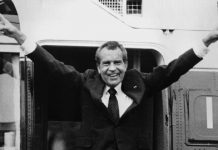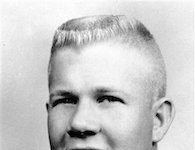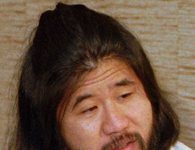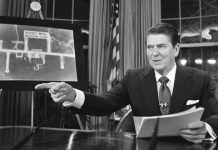On February 22, 1980, the underdog U.S. hockey team beat the powerful Soviet team in a thrilling upset at the Lake Placid Olympics.
USA 4, USSR 3
Heading into the 1980 Winter Olympics in Lake Placid, New York, the Soviet hockey team was heavily favored to win its fifth straight Olympic gold medal. Little was expected of the United States team, especially after losing 10–3 to the Soviets in an exhibition game days before the Olympics.
As expected, the USSR cruised undefeated through its first five games to reach the four-team medal round. The United States shocked many experts in their opening games, tying Sweden and defeating Czechoslovakia. After three wins against lesser competition, they advanced to the medal round, where they faced the Soviets first.
The United States hung with the Soviets in the first period and trailed 2–1 when a mistake by Hall of Fame goaltender Vladislav Tretiak helped turn the game. In the final seconds of the period, Tretiak gave up a long rebound on a shot from center ice, and American Mark Johnson put it home to tie the game with one second left. Soviet coach Viktor Tikhonov pulled Tretiak, a decision he would call his biggest mistake ever.
The USSR scored the only goal of the second period, but Johnson tied the game in the third. Then, halfway through the period, the United States’ captain Mike Eruzione fired a snap shot passed Soviets backup goaltender Vladimir Myshkin to give America a 4–3 lead.
A video of the final two minutes of the game, with commentary by Al Michaels and Ken Dryden, is available from the Lake Placid Olympic Region.
The Soviets tried furiously to tie the game, but American goaltender Jim Craig helped preserve the lead. With five seconds left, as the United States cleared the puck out of its zone to seal the victory, announcer Al Michaels exclaimed, “Do you believe in miracles? Yes!”
American players mobbed around Craig in celebration as the Soviets stood stunned at their blue line. The Lake Placid crowd waved large American flags and chanted “USA! USA!”
“It was an Olympian moment,” wrote E.M. Smith in Sports Illustrated, “the kind the creators of the Games must have had in mind, one that said: Here is something that is bigger than any of you.”
The Americans still needed to beat Finland two day later to win gold; a loss would have given the Soviets the gold and the United States bronze. Though they trailed 2–1 heading into the third, the United States scored three unanswered goals to win the gold.
The Miracle on Ice was the subject of the 2004 movie “Miracle” starring Kurt Russell as coach Herb Brooks.
Background: The United States and Soviet Teams
The Soviets were the dominant team of international hockey, winning four straight Olympic golds and frequently defeating teams of professionals in exhibition games. “They practiced eleven months of the year and devoted themselves exclusively to hockey,” describes the International Ice Hockey Federation. “They were in flawless physical condition. They practised as five-man units to ensure everyone on ice knew where every teammate was at all times”
The Americans were primarily amateur collegians, unknown even to many hockey fans. Coach Herb Brooks, a two-time Olympian who was the last cut on the 1960 gold medal winning United States team, was a “driven perfectionist” who pushed the young team hard during six months of preparation. Many of the players grew to hate Brooks, but they respected him and were highly motivated by him.
Several of the players would go on to have long careers in the NHL, including Neil Broten, Mike Ramsey, Ken Morrow, Mark Johnson, and Dave Christian. “Maybe we overachieved,” remarked Ramsey. “But we were a damn good hockey team.”
Historical Context: American Society in 1980
The “Miracle on Ice,” became a symbol of American resolve in an era of apathy and growing American-Soviet tension. Russia had invaded Afghanistan in December 1979. Americans were facing the Iranian hostage crisis, an energy crunch, inflation, and high unemployment. Public disillusionment lingered over events of the 1970s like the bitter end of the Vietnam War and the Watergate scandal.
“That game may have been the moment when Americans started feeling pride again,” Barry Rosen, one of the captives from the Iranian hostage crisis, told The New York Times. “People were looking for something to hold on to. Things were so bad for so long.”
Sources in this Story
- Lake Placid Olympic Region: Miracle on Ice
- ESPN: College kids perform Olympic miracle
- Sports Illustrated: The Golden Goal
- International Ice Hockey Federation: Miracle on Ice
- Sports Illustrated: A Reminder Of What We Can Be
- The New York Times: How ‘Miracle on Ice’ Helped Restore Faith
- ESPN: The First Miracle on Ice
The Game’s Place in History
The “Miracle on Ice” is considered by many to be the greatest moment in American sports history. Sports Illustrated named the entire team its Sportsmen of the Year for 1980, the first time that a team had received that honor.
“At a time when international tensions and domestic frustrations had dampened traditional American optimism, the underdog U.S. Olympic hockey team gave the entire nation a lift,” wrote E.M. Smith. “Those youngsters did so by means of the old-fashioned American work ethic, which some people feared was disappearing from the land.”
Kevin Allen, author of “USA Hockey: A Celebration of a Great Tradition,” writes, “No other Olympic performance has touched America the way that hockey team did, not even Jesse Owens’s brilliant runs in front of Adolf Hitler in Berlin in 1936. Thanks to the advent of television, Eruzione’s goal in 1980 triggered a spontaneous national celebration of amazing proportion. People wept, strangers hugged each other, and groups around the country broke into stirring renditions of ‘God Bless America’ and ‘The Star-Spangled Banner.’”
Related Topic: The 1960 U.S. Hockey Team
Kevin Allen writes about the “First Miracle on Ice,” when an underdog American team won gold at the 1960 Squaw Valley Olympics. Herb Brooks was the last player cut from the team and had to watch on television as the United States defeated the heavily favored Canadians and Soviets to win the first hockey gold medal in American history.
The 1960 team is profiled in the documentary “Forgotten Miracle.”











